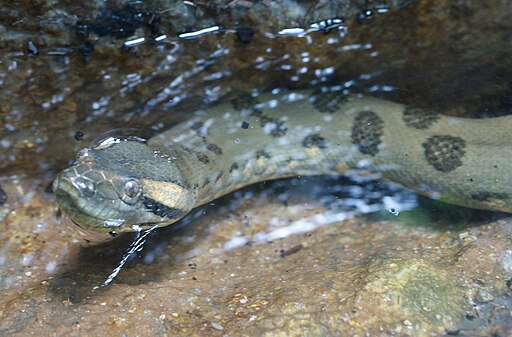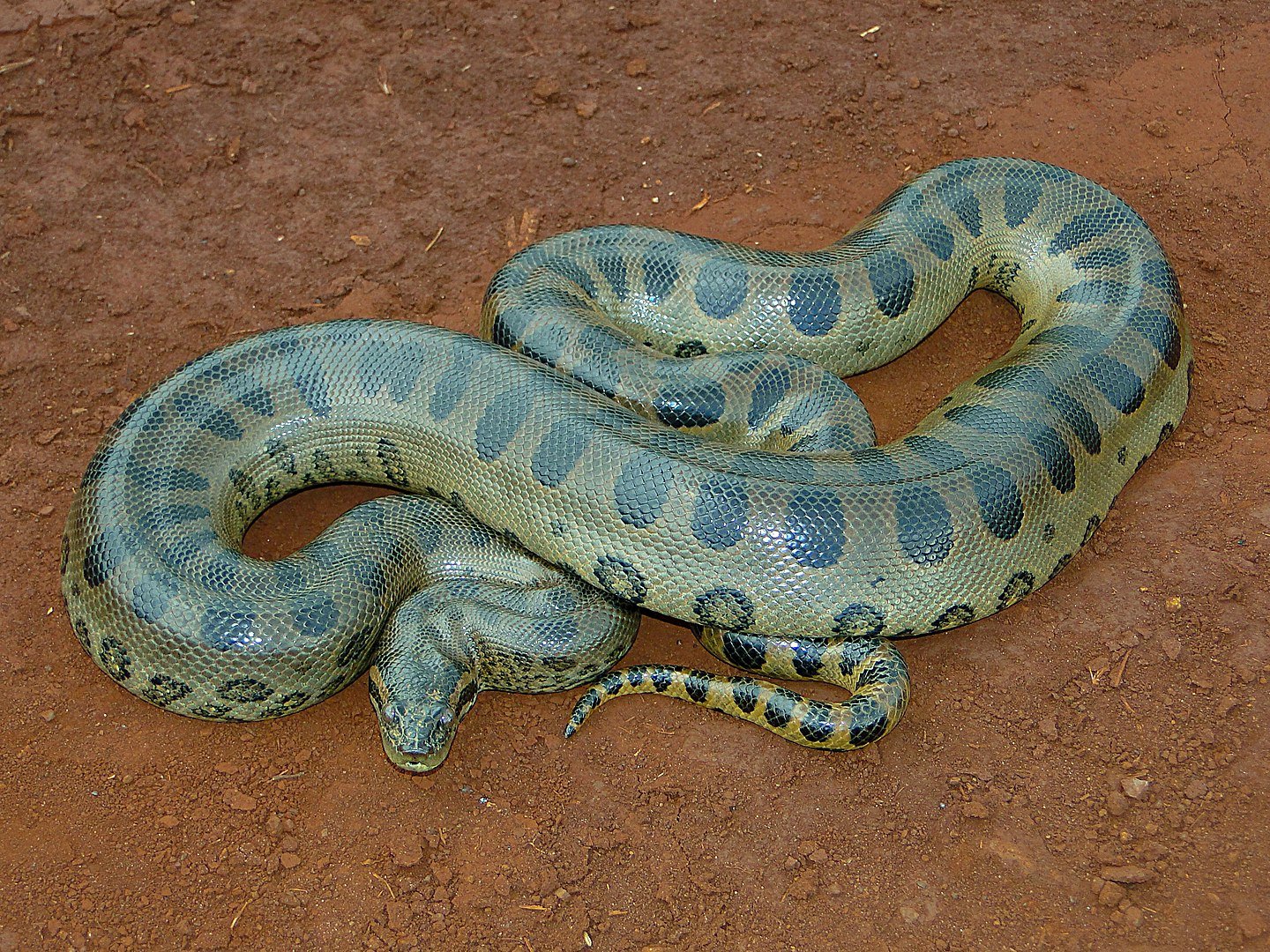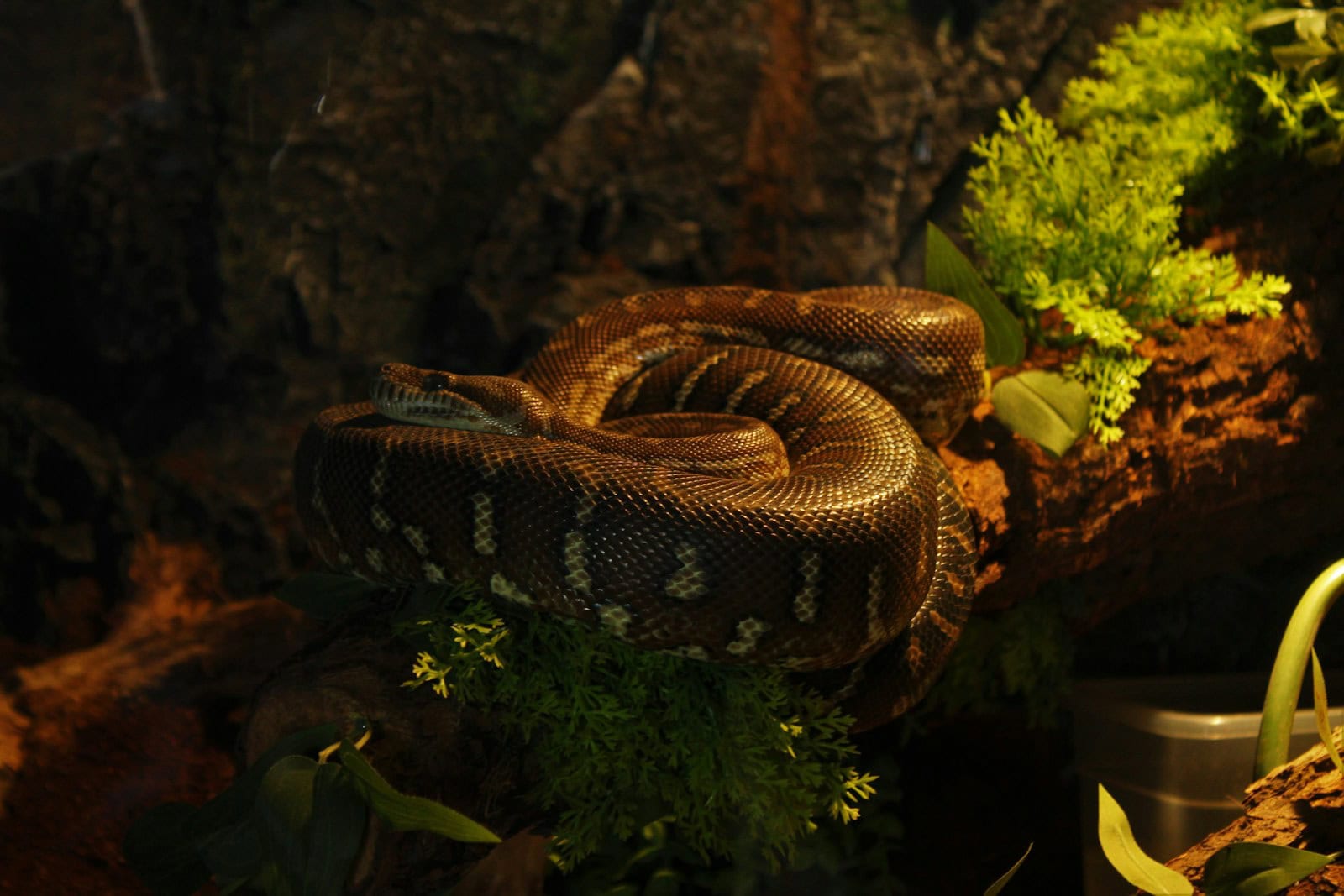Imagine paddling through the serene waters of the Amazon Basin, only to realize that beneath the surface lurks a snake as long as a small bus and as heavy as a grand piano. The green anaconda, known as the heaviest snake on Earth, has captivated imaginations and stirred fears with its incredible size and strength. With tales of swallowing prey whole and gliding silently through murky waters, this giant serpent is a master of stealth and power. But what makes the green anaconda such a heavyweight champion of the reptile world?
The Heaviest Snake on Earth

The green anaconda (Eunectes murinus) is not just another large snake; it holds the title of the heaviest snake globally, outclassing all other serpents in sheer mass. While it may not be the longest snake—that honor goes to the reticulated python—the green anaconda’s bulk is unmatched.
Weight: Green anacondas can tip the scales at over 550 pounds (250 kg).
Length: They can grow up to 30 feet (9 meters) long.
Girth: Some green anacondas are as thick as a human torso, showcasing their robust muscle mass.
One of the heaviest green anacondas ever recorded weighed approximately 550 pounds, and tales of even larger anacondas lurking in the Amazon’s depths continue to fuel legends and local lore.
How Does the Green Anaconda Compare to Other Giant Snakes?

While the green anaconda reigns supreme in weight, it competes closely with other massive serpents:
Reticulated Python: The longest snake globally, reaching lengths of over 30 feet, but generally not as heavy, averaging around 350 pounds.
Burmese Python: Another heavyweight, capable of weighing up to 400 pounds, but still not quite matching the green anaconda’s bulk.
These comparisons highlight the green anaconda’s unique position as a heavyweight predator that combines impressive length with incredible girth.
Where Do Green Anacondas Live?

The green anaconda thrives in the wetlands, swamps, marshes, and slow-moving rivers of South America, particularly within the Amazon and Orinoco basins. Its semi-aquatic lifestyle provides numerous advantages, allowing this massive snake to maneuver gracefully in water despite its size.
Water not only supports the snake’s weight but also offers a perfect hunting ground. With only its eyes and nostrils visible above the surface, the green anaconda can stalk prey without being seen.
Anaconda’s Deadly Hunting Techniques

The green anaconda is an ambush predator, preferring to lie in wait rather than actively chase its prey. It is capable of holding its breath for up to 10 minutes while remaining motionless underwater. When an unsuspecting animal comes within reach, the anaconda strikes with lightning speed, coiling its muscular body around the prey.
Diet: The green anaconda’s menu is as varied as it is ambitious, including large mammals like deer, capybaras, wild pigs, caimans, and occasionally, jaguars. They use constriction to suffocate and crush their prey, demonstrating immense power that few creatures can escape.
Real-Life Encounters with Giant Anacondas

There have been numerous encounters with green anacondas that continue to highlight the snake’s formidable presence:
The Amazon Expedition: In 2016, researchers captured footage of a 20-foot green anaconda slithering through a Brazilian river. The sheer size and strength of the snake left the team in awe.
The Fisherman’s Shock: A Bolivian fisherman once recorded a giant anaconda devouring a capybara whole, showcasing the snake’s incredible hunting capabilities.
The Conservationist’s Close Call: During a documentary shoot, conservationist Steve Backshall found himself inches away from an 18-foot anaconda, providing a firsthand look at the danger and majesty of this species.
The Science Behind the Anaconda’s Massive Size

Several biological and ecological factors contribute to the green anaconda’s impressive size:
Muscle Mass: Unlike many other snakes, green anacondas have an exceptionally dense muscle structure, enhancing their strength and constriction power.
Aquatic Adaptations: Living in water helps support their massive weight, allowing them to grow heavier than terrestrial snakes.
Feeding Efficiency: With the ability to consume large prey, anacondas can store energy efficiently, reducing the need for frequent meals.
The Green Anaconda’s Role in the Ecosystem

As an apex predator, the green anaconda plays a crucial role in maintaining ecological balance:
Population Control: By preying on large mammals and reptiles, anacondas help regulate populations of various species, preventing overgrazing and maintaining biodiversity.
Scavenger Benefits: They occasionally consume carrion, contributing to the ecosystem’s cleanup process.
Even as a top predator, the green anaconda is part of the food web. Jaguars, caimans, and large birds of prey may target young or smaller anacondas, maintaining nature’s balance.
Are Anacondas Dangerous to Humans?

Hollywood blockbusters like Anaconda have exaggerated the snake’s threat to humans, but in reality, green anaconda attacks on people are incredibly rare. Most incidents occur when humans encroach on their territory or attempt to handle them.
In the wild, anacondas are more likely to avoid humans than confront them. However, their immense strength and size mean that caution is always warranted.
Safety Tips: How to Avoid Anaconda Encounters

If you find yourself in green anaconda territory, here are some safety tips to keep in mind:
Stay Clear of Murky Waters: Anacondas use water as camouflage, so avoid wading through rivers and swamps where visibility is low.
Avoid Swimming at Dawn or Dusk: Many predators, including anacondas, are most active during these times.
Stay Vigilant: Be aware of your surroundings, especially near water’s edge where anacondas might ambush prey.
The Anaconda in Culture and Mythology

The green anaconda has a prominent place in South American culture and mythology. Indigenous tribes often revere the snake as a symbol of strength, mystery, and the power of nature. Its portrayal in modern media, while often sensationalized, continues to captivate audiences worldwide.
Conclusion

The green anaconda’s status as the world’s heaviest snake is not merely a record but a testament to the incredible adaptability and raw power of nature. These serpents command respect, not just for their size and strength, but for the vital role they play in their ecosystem. While stories of monstrous anacondas might send shivers down your spine, understanding their true nature can transform fear into admiration.
Next time you peer into a quiet South American river, remember—you might be closer to one of these massive, mysterious giants than you think.
- Watch Viral Video: Trophy Hunter Attacked by Lion’s Brother – Real or Not? - August 14, 2025
- The Secrets of the Adorable Baby Squirrels - August 13, 2025
- Dog Owner Set Up a Nanny Cam After Noise Complaints – Watch What Unfolded - August 13, 2025

